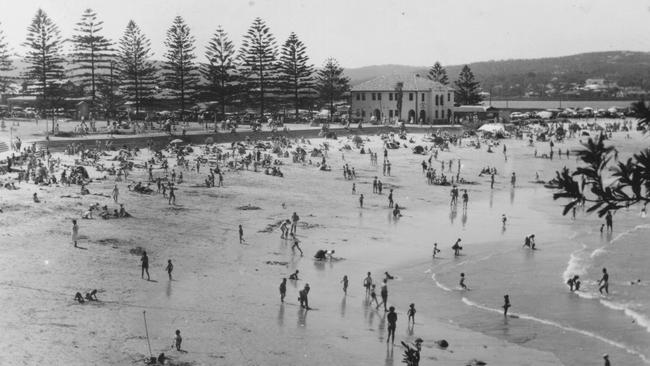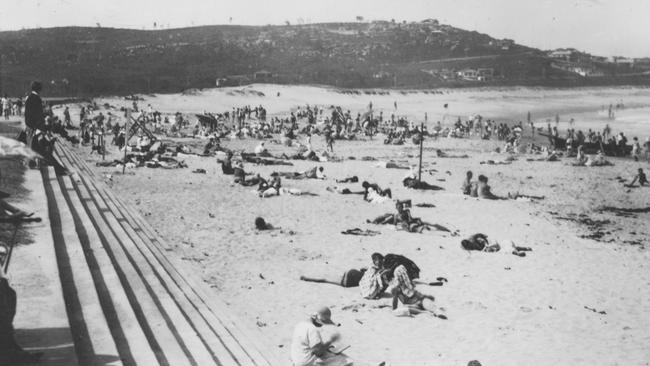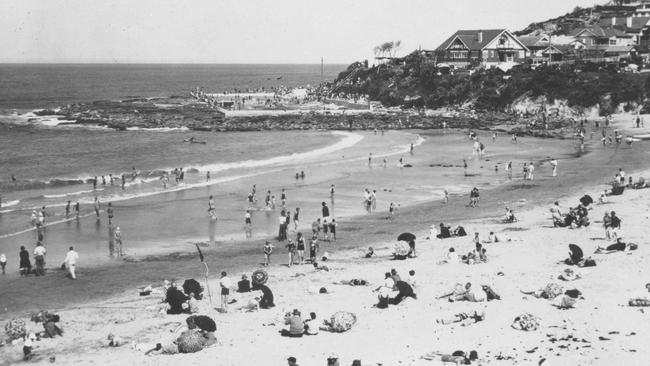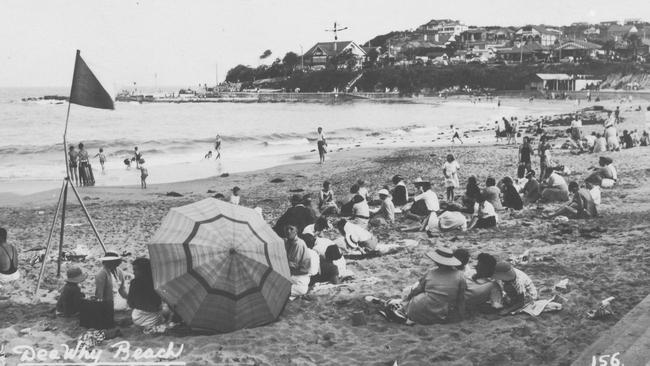Fear of sharks drove a councillor to have a barrier built at Dee Why but it didn’t go well
This Sydney shark net probably seemed like a good idea at the time but as the saying adapted from a Robert Burns poem goes: ‘The best laid plans of mice and men often go awry’.

- The master mariner who was a leading light behind the leading line
- The history behind the guns at West Head
- Warringah Council’s 1936 plan to build a road along a sand dune
- Bilgola Estate surveyor’s body found after going for a swim
It probably seemed like a good idea at the time but as the saying adapted from a Robert Burns poem goes: “The best laid plans of mice and men often go awry”.
The plan was to build a shark-proof swimming enclosure at Dee Why Beach to protect bathers from sharks but it caused far more injuries than it might have saved in its short life while being battered to oblivion by the ocean.
After daylight bathing was legalised, first by Randwick Council in 1902 and then by Manly Council in 1903, surf bathing became increasingly popular.
But there were two problems with swimming in the ocean — many people were poor swimmers and the ocean is the normal habitat of sharks.

The former could be helped by a combination of education and the efforts of lifesavers but the latter could only be permanently solved by placing a barrier between the sharks and the bathers.
Rock pools were good if swimmers didn’t fancy the ocean but only shark-proof enclosures could separate bathers and sharks in the ocean or in enclosed waterways, such as Port Jackson or Pittwater.
Such enclosures could be built in enclosed waterways with comparative ease but building them in the ocean was another matter.
Randwick Council took the lead — again — when it erected a shark-proof enclosure at Coogee Beach that was a raging success.
The Coogee net survived until World War II, when it was removed for security reasons, but it only survived that long because Coogee Beach is protected from heavy seas by Wedding Cake Island.
None of the northern beaches have that sort of protection but that didn’t stop Warringah Council installing a shark-proof net at Dee Why Beach in 1936.

The driving force behind the shark net was Warringah Shire councillor Thomas Nicholas, who in 1932 called for one to be built at the southern end of Dee Why Beach.
There was good reason for bathers to fear sharks — there had been several fatal shark attacks on the eastern beaches and State Government had formed a NSW Shark Menace Committee in 1929 to examine possible solutions.
While attempts to kill sharks were deemed “likely to do more harm than good and are only a temporary expedient at best,” shark-proof enclosures on ocean beaches were deemed “unlikely to withstand heavy seas”.
Despite this sage advice, Cr Nicholas continued to push for a shark net at Dee Why.
He even suggested sinking an old ship off the beach to form a breakwater as a foundation for a shark-proof fence but the Navigation Department said “the hulk would soon become a battered mass and ultimately a menace to bathers”.
The issue was cast in a more intense light in March 1934, when there was a fatal shark attack at Dee Why, followed by another fatal attack at North Steyne in April 1934.

In May 1934, Warringah Council sought tenders for a shark net at Dee Why but no suitable tenders were received and the issue drifted along until late 1935, when new tenders were sought and by early 1936 construction had begun.
By then there had been two more fatal shark attacks — at North Narrabeen in March 1935 and at South Steyne in February 1936.
The enclosure at Dee Why comprised a net running from two piles about 220m apart on the beach to a buoy anchored in the water, with the net suspended from a wire-hawser and weighted at the bottom, forming a triangular enclosure.

The shark-proof pool was to have been officially opened on March 7, 1936 but heavy seas delayed its completion.
And even before it was officially opened, the net caused five accidents, including two that could have been fatal to members of Dee Why SLSC.
In one, a club member was knocked unconscious when his head hit the wire hawser and he was found floating face down in the water.
Another club member was severely cut when his surfoplane crashed into the net while a third was injured when his surf ski crashed into it.
The most serious occurred when a surf boat crashed through the net and under the wire hawser, damaging the boat and the net.
One of the surfboat crew was knocked unconscious and was rushed to Manly Hospital suffering concussion and a possible fracture of the skull.

A week later another surf boat crashed into the net in shallow water when a heavy wave pushed it against the net.
The “safety device” was proving to be anything but.
By the end 1936, the shark net and its reputation were in tatters and by January 1937, the surf club was asking the council to remove the poles on the beach because they were a danger to bathers.
By the end of 1937, all traces of the well-intentioned but poorly-informed shark net had been removed.
So fleeting was its presence that no photographs of the Dee Why shark net have been found.
